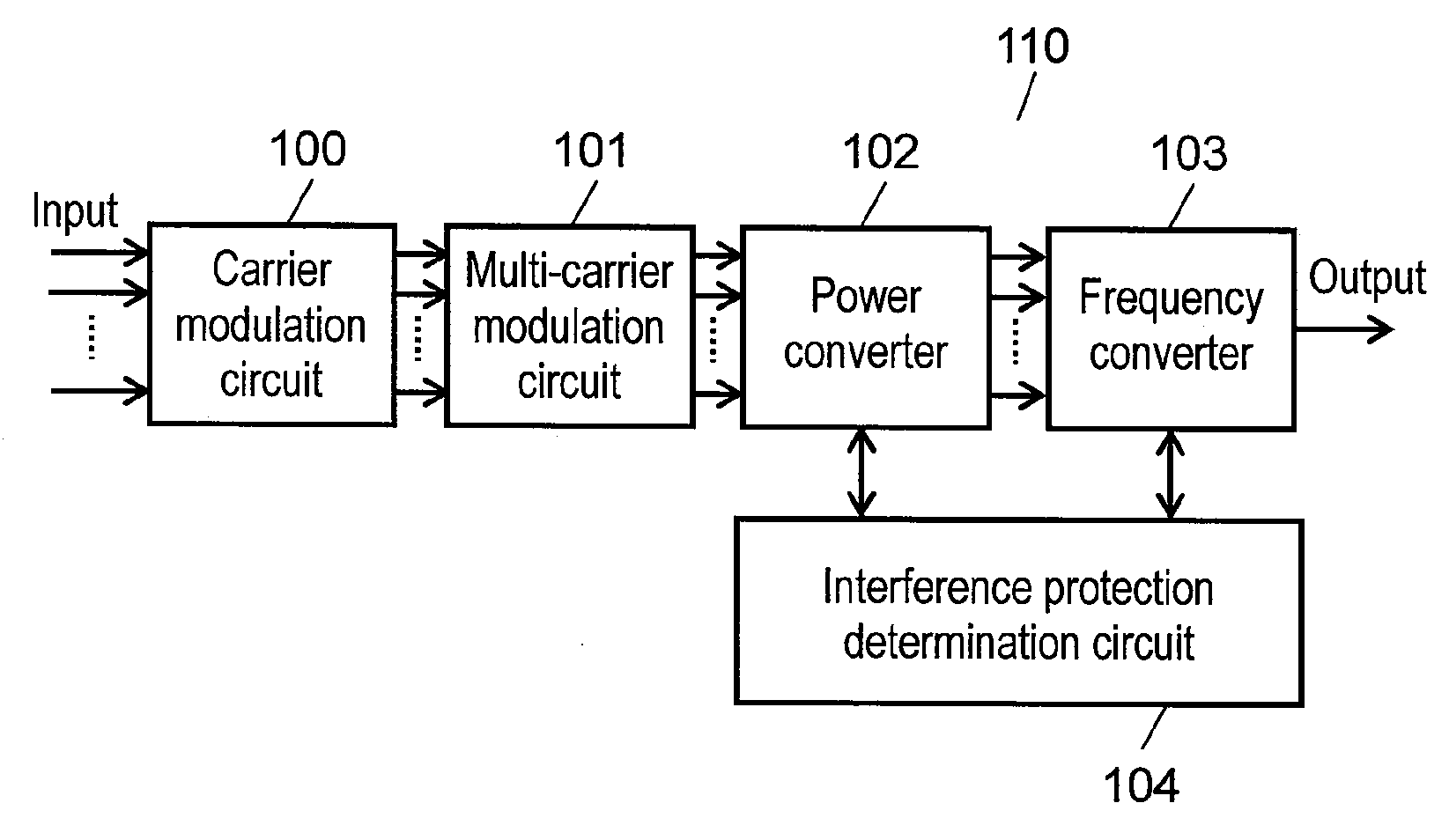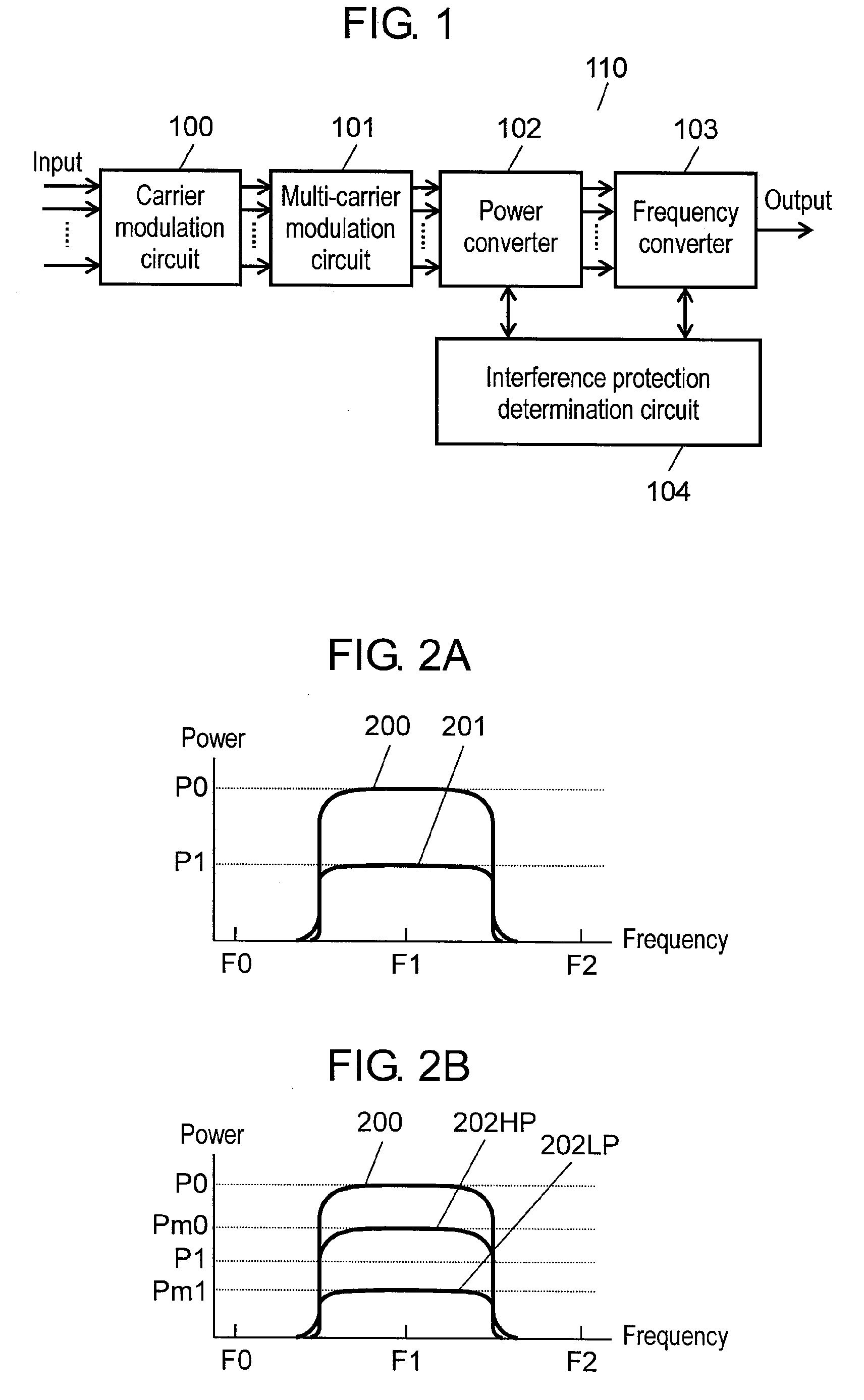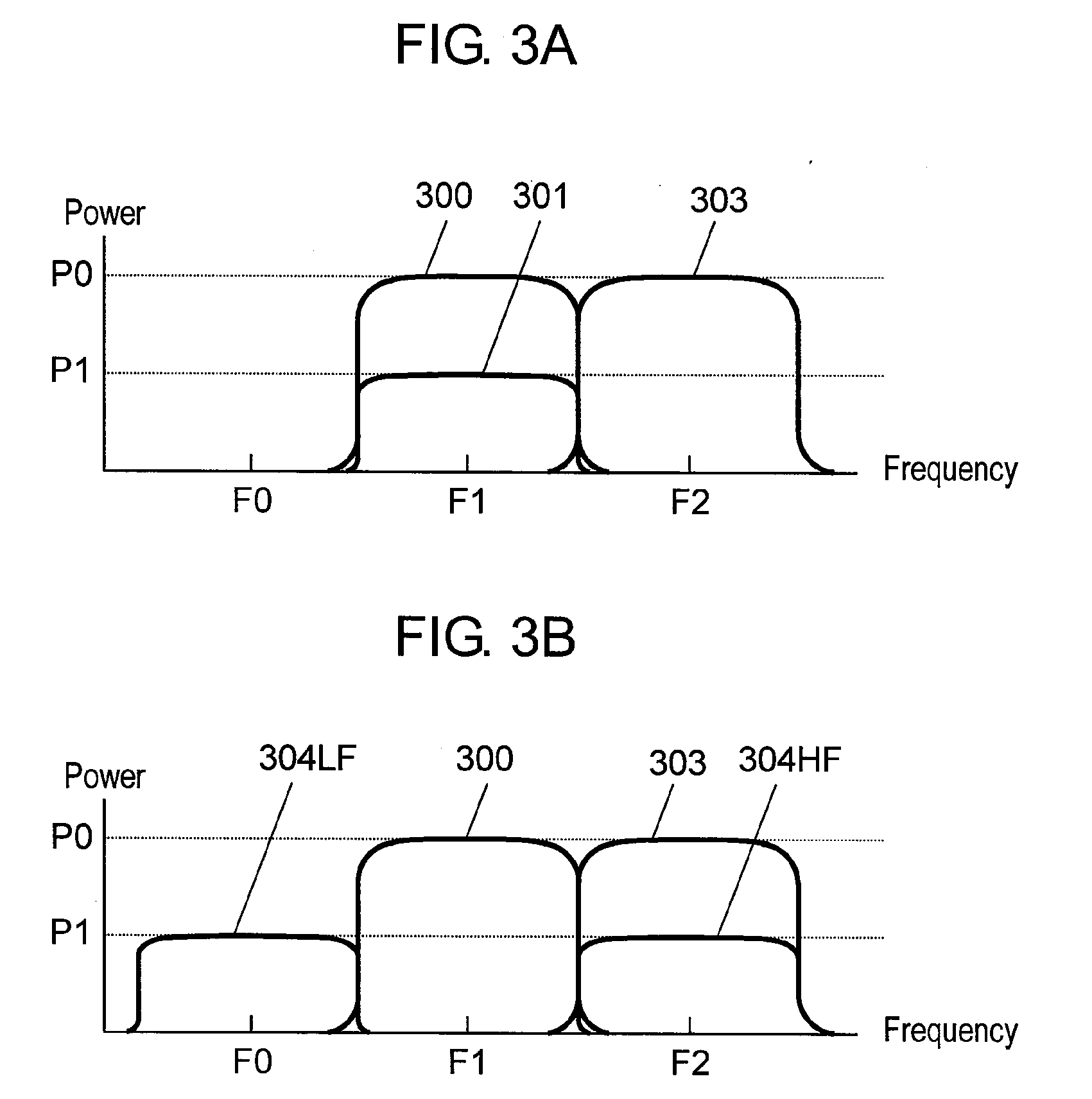Multi-carrier signal transmitter, multi-carrier signal receiver, and method of transmitting and receiving multi-carrier signal
a multi-carrier signal and receiver technology, applied in the direction of digital transmission, transmission path division, baseband system details, etc., can solve the problems of digital interference between the higher layer component and the lower layer component of the multi-carrier signal
- Summary
- Abstract
- Description
- Claims
- Application Information
AI Technical Summary
Benefits of technology
Problems solved by technology
Method used
Image
Examples
first exemplary embodiments
[0048]FIG. 1 is a block diagram showing one example of multi-carrier signal transmitter according to the first exemplary embodiment of this invention.
[0049]In FIG. 1, multi-carrier signal transmitter 110 includes carrier modulation circuit 100, multi-carrier modulation circuit 101, power converter 102, frequency converter 103 and interference protection determination circuit 104. Carrier modulation circuit 100 receives a plurality of input signals for carrier modulation, and outputs a plurality of carriers. Multi-carrier modulation circuit 101 receives the plurality of carriers output from carrier modulation circuit 100, and outputs a plurality of multi-carrier signals. These multi-carrier signals are comprised of a plurality of carriers multiplexed along a frequency axis, which are transmitted in parallel. Power converter 102 receives the plurality of multi-carrier signals output from multi-carrier modulation circuit 101, and outputs the plurality of multi-carrier signals after inc...
second exemplary embodiment
[0069]FIG. 7 is a block diagram of multi-carrier signal transmitter 710 representing one example according to the second exemplary embodiment of this invention. Like reference marks are used in FIG. 7 to designate like structural components as those of FIG. 1, and their details will be skipped.
[0070]In FIG. 7, variable amplifier 700 receives a plurality of multi-carrier signals output from multi-carrier modulation circuit 101, and outputs the plurality of multi-carrier signals after increasing a level of their amplitude. When the level of amplitude is increased, their power level also increases. Variable attenuator 701 receives the plurality of multi-carrier signals output from variable amplifier 700, and outputs the plurality of multi-carrier signals after decreasing a level of their amplitude. When the level of amplitude is decreased, their power level also decreases. Frequency processor 702 receives the plurality of multi-carrier signals output from variable attenuator 701, and o...
third exemplary embodiment
[0091]Description is provided for a multi-carrier signal receiver according to the third exemplary embodiment of this invention with reference to FIG. 9.
[0092]As shown in FIG. 9, multi-carrier signal receiver 900 of the third exemplary embodiment includes frequency inverter 910, power inverse converter 920, multi-carrier demodulation circuit 930 and carrier modulation circuit 940. This multi-carrier signal receiver 900 carries out processes in reverse of those executed by any of multi-carrier signal transmitter 110 shown in FIG. 1 and multi-carrier signal transmitter 710 shown in FIG. 7.
[0093]Frequency inverter 910 inverts a frequency of received signals when needed. That is, frequency inverter 910 has a function of inverting a center frequency of the received multi-carrier signals if the center frequency is found converted at the time of transmission to recover the original center frequency. In the case of receiving lower layer component 304HF or lower layer component 304LF of the ...
PUM
 Login to View More
Login to View More Abstract
Description
Claims
Application Information
 Login to View More
Login to View More - R&D
- Intellectual Property
- Life Sciences
- Materials
- Tech Scout
- Unparalleled Data Quality
- Higher Quality Content
- 60% Fewer Hallucinations
Browse by: Latest US Patents, China's latest patents, Technical Efficacy Thesaurus, Application Domain, Technology Topic, Popular Technical Reports.
© 2025 PatSnap. All rights reserved.Legal|Privacy policy|Modern Slavery Act Transparency Statement|Sitemap|About US| Contact US: help@patsnap.com



